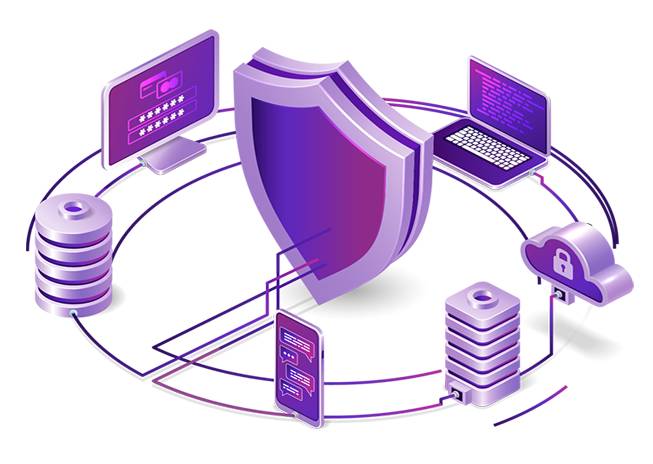Banks and insurance companies process large amounts of data in countless transactions every day. This is also the case at ReiseBank AG – Germany’s market leader in the business of travel payment methods. In addition to so-called hot data (data that is actively worked with), a company like ReiseBank accumulates a lot of cold (inactive) data. These must be secured in compliance with the law, but also be available again quickly if necessary.
Dipl.-Ing. Jörg-Peter Levin is Key Account Manager & Manager Operations at Cristie Data GmbH: “Large amounts of inactive data are taking up more and more storage space on the network drives at ReiseBank AG. This is not just a major cost factor. It also introduces significant delays in backups or in the event of a disaster recovery. Valuable time for a company whose business model is primarily based on real-time transactions.”
The financial institution was looking for a solution for the automated archiving of data that no longer needs to be accessed or accessed only infrequently. It should preferably be a software-based solution. “Our many years of experience with numerous banks and insurance companies helped us to quickly recommend the right solution here,” emphasizes Cristie Managing Director Volker Wester.
The swapping process and thus the relief of the primary storage should run rule-based in the background. Access to archived data had to continue to be transparent for users without changing the usual workflows. “It quickly became clear to us that only a few providers would come into question here. The choice quickly fell on the PoINT Storage Manager,” explains Jörg-Peter Levin. The data & storage management solution from PoINT Software & Systems GmbH in Siegen is particularly suitable for migrating and archiving large amounts of unstructured data to secondary or archive storage in multi-level storage architectures.
After the test phase, the decision was made to use a two-tier memory architecture. The specialist departments continue to access their data via the usual applications. With the PoINT Storage Manager, the directory entries remain on the primary storage system. The file contents migrate to the archive storage. This procedure fully preserves the original file system structure. When a file is accessed, it is automatically read from the archive memory and transferred to the application.
Dipl.-Ing. Jörg-Peter Levin is Key Account Manager & Manager Operations at Cristie Data GmbH: “Large amounts of inactive data are taking up more and more storage space on the network drives at ReiseBank AG. This is not just a major cost factor. It also introduces significant delays in backups or in the event of a disaster recovery. Valuable time for a company whose business model is primarily based on real-time transactions.”
The financial institution was looking for a solution for the automated archiving of data that no longer needs to be accessed or accessed only infrequently. It should preferably be a software-based solution. “Our many years of experience with numerous banks and insurance companies helped us to quickly recommend the right solution here,” emphasizes Cristie Managing Director Volker Wester.
The swapping process and thus the relief of the primary storage should run rule-based in the background. Access to archived data had to continue to be transparent for users without changing the usual workflows. “It quickly became clear to us that only a few providers would come into question here. The choice quickly fell on the PoINT Storage Manager,” explains Jörg-Peter Levin. The data & storage management solution from PoINT Software & Systems GmbH in Siegen is particularly suitable for migrating and archiving large amounts of unstructured data to secondary or archive storage in multi-level storage architectures.
After the test phase, the decision was made to use a two-tier memory architecture. The specialist departments continue to access their data via the usual applications. With the PoINT Storage Manager, the directory entries remain on the primary storage system. The file contents migrate to the archive storage. This procedure fully preserves the original file system structure. When a file is accessed, it is automatically read from the archive memory and transferred to the application.
The displacement of the file contents into the archive storage relieves the storage network and primary storage. Hans Hohenwarter, System Operations Team Leader at ReiseBank AG, is relieved: “We are now relaxed about the growth in data volume in particular. We are well positioned with the new architecture and the PoINT Storage Manager. In addition, we can meet the rising costs, e.g. B. for fast storage media, counteract this effectively.”
Another benefit of the new architecture is the significant reduction in backup and recovery times. Rapid recovery of strategically important data is business-critical for service providers such as ReiseBank AG. In addition, existing resources could continue to be used. The Storage Manager supports storage media regardless of manufacturer.
Due to the flexible configuration and easy expansion options, Cristie Data GmbH and ReiseBank AG have found a long-term solution for storage and data management with the PoINT Storage Manager.
Drastic reduction in backup and restore times
Efficient file lifecycle management
Another benefit of the new architecture is the significant reduction in backup and recovery times. Rapid recovery of strategically important data is business-critical for service providers such as ReiseBank AG. In addition, existing resources could continue to be used. The Storage Manager supports storage media regardless of manufacturer.
Due to the flexible configuration and easy expansion options, Cristie Data GmbH and ReiseBank AG have found a long-term solution for storage and data management with the PoINT Storage Manager.
Advantages of the solution at a glance:
Immediate relief of expensive primary storage with unchanged file system structure Faster access and processing times while reducing the bandwidth required in the storage networkDrastic reduction in backup and restore times
Efficient file lifecycle management

